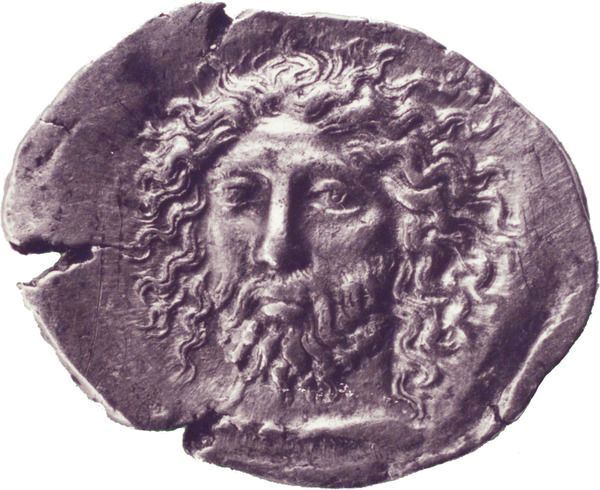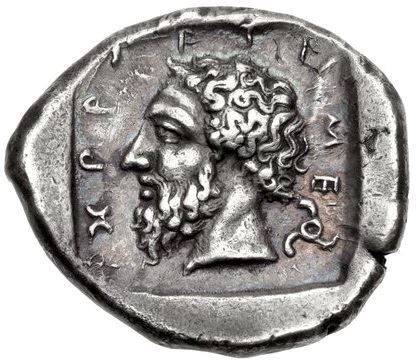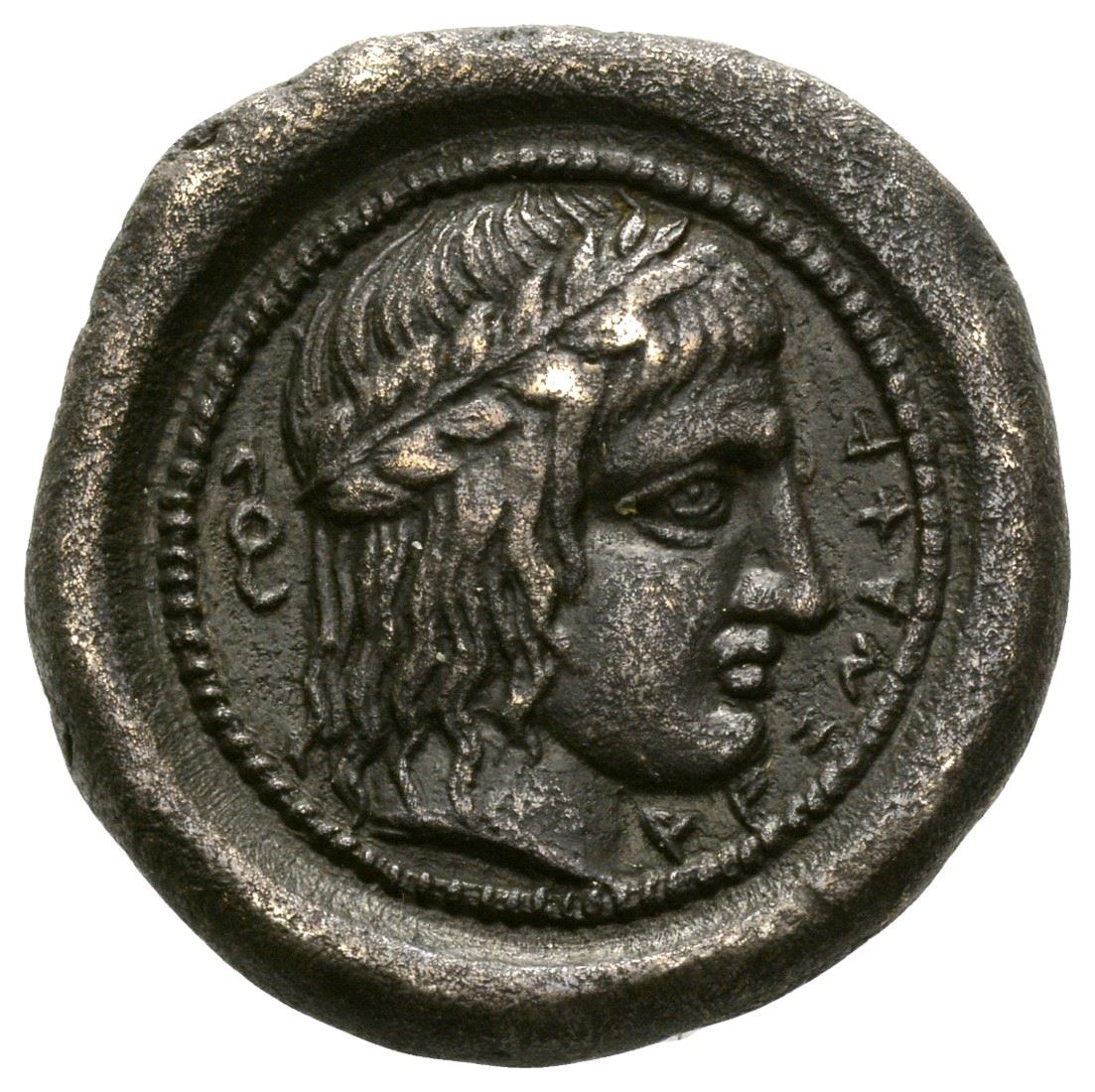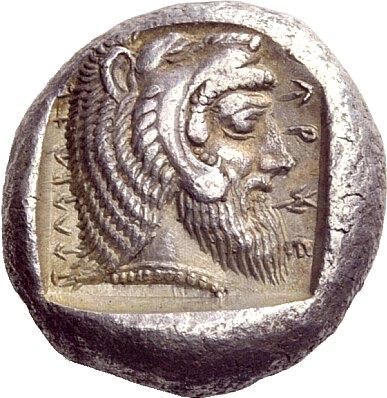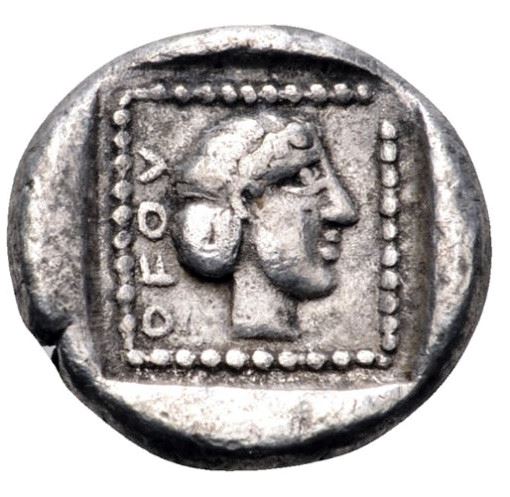Lycia is an area in Asia Minor - in ancient times it was populated by a people who many claim were the descendants of the Luwians. When Lycia was conquered by the Persians in 546 BC, they encountered stiff resistance - so much that they soon preferred a client state to direct control.
The firts Lycian dynast seems to have been called Kosikas, and ruled from around 525 BC to 520 BC. He was succeeded by Kubernis, who rules until 480 BC, and so on until Perikle - the last Lycian dynast - in 380-360 BC, after which the Persians seem to have reestablished direct control following a rebellion.
A great deal of confusion and uncertainty exists concerning the precise chronology of the Lycian Dynasts.
The firts Lycian dynast seems to have been called Kosikas, and ruled from around 525 BC to 520 BC. He was succeeded by Kubernis, who rules until 480 BC, and so on until Perikle - the last Lycian dynast - in 380-360 BC, after which the Persians seem to have reestablished direct control following a rebellion.
A great deal of confusion and uncertainty exists concerning the precise chronology of the Lycian Dynasts.
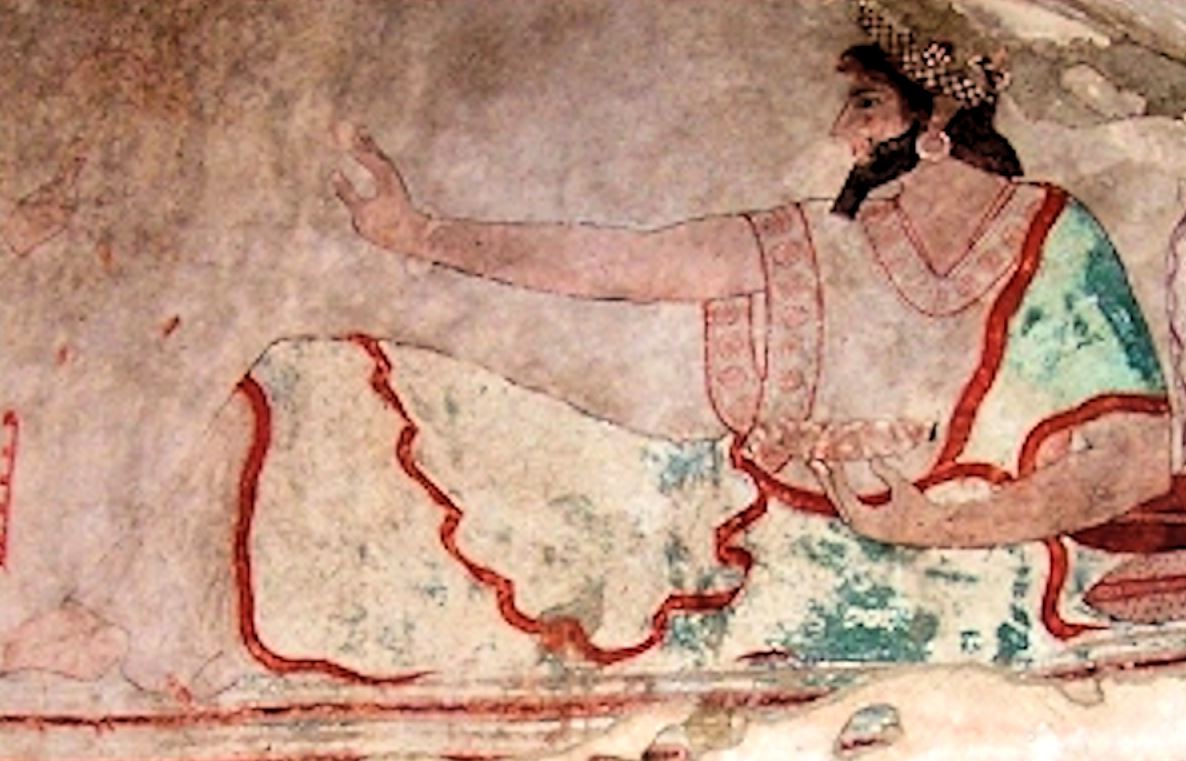
Pericles or Perikle was the name of the dynast or king of the Lycian city of Limyra during the 370s BC.
We have very little biographical information on Pericles. The name ‘Pericles’ is obviously unusual for a Lycian ruler. It can be attributed to the fact that his family maintained close ties with Athens, possibly with the Athenian Pericles himself. Perhaps some of his ancestors had ser...
We have very little biographical information on Pericles. The name ‘Pericles’ is obviously unusual for a Lycian ruler. It can be attributed to the fact that his family maintained close ties with Athens, possibly with the Athenian Pericles himself. Perhaps some of his ancestors had ser...
Mithrapata was dynast of Lycia in the early 4th century BC, at a time when this part of Anatolia was subject to the Persian, or Achaemenid, Empire.
Present-day knowledge of Lycia in the period of classical antiquity comes mostly from archaeology, in which this region is unusually rich. Believed to have been based at Antiphellus, Mithrapata is known to have competed for power with anothe...
Present-day knowledge of Lycia in the period of classical antiquity comes mostly from archaeology, in which this region is unusually rich. Believed to have been based at Antiphellus, Mithrapata is known to have competed for power with anothe...
Vekhssere - also known as Wekhssere - was dynast of Lycia in the mid 5th century BC, at a time when this part of Anatolia was subject to the Persian, or Achaemenid, Empire.
Present-day knowledge of Lycia in the period of classical antiquity comes mostly from archaeology, in which this region is unusually rich.
Vekhssere I seems to have been based in Xanthos.
Present-day knowledge of Lycia in the period of classical antiquity comes mostly from archaeology, in which this region is unusually rich.
Vekhssere I seems to have been based in Xanthos.
Kherei was a Dynast in Lycia from circa 440-410 BC. He was apparently the brother of the previous Dynast - Kheriga.
Kherei is presumably identical to the Kherei who is the hero on the tri-lingual Xanthos Stele, which is written in Greek and two Luwian languages; Lycian & Milyan.
All of this is very speculative, however, as is most of Lycian history.
Kherei is presumably identical to the Kherei who is the hero on the tri-lingual Xanthos Stele, which is written in Greek and two Luwian languages; Lycian & Milyan.
All of this is very speculative, however, as is most of Lycian history.
Uvug or Uwug seems to have been a Lycian dynast. His coins are attributed to 470-440 BC. He may have been a local Dynast, rather than the master of all of Lycia.
Coins of Uwug seem to have sometimes been struck on a Carian weight standard.
Coins of Uwug seem to have sometimes been struck on a Carian weight standard.

